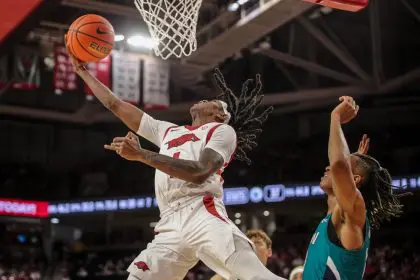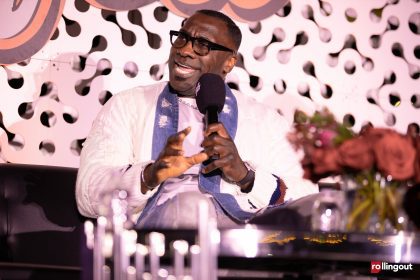The nightmare that every professional athlete fears became reality for several Seattle-area sports stars, and now law enforcement has finally made a breakthrough in what prosecutors describe as a sophisticated burglary operation specifically targeting high-profile players. The arrest of Earl Henderson Riley IV marks a significant development in a case that has exposed just how vulnerable even the most successful athletes can be in their own homes.
What makes this case particularly disturbing isn’t just the scale of the thefts—we’re talking about hundreds of thousands of dollars in stolen goods—but the calculated nature of how these crimes were planned and executed. This wasn’t random opportunistic crime; this was a deliberate strategy to target people whose wealth and travel schedules made them attractive victims.
The investigation revealed a pattern that should terrify any athlete with a high-profile lifestyle. Riley and his alleged accomplices weren’t just looking for any expensive house to rob—they were specifically researching and targeting current and former professional athletes, knowing exactly what they were likely to find and when the homes would be most vulnerable.
The staggering scope of stolen wealth
The financial impact of these burglaries tells a story that goes far beyond simple property crime. When prosecutors detail thefts totaling over $300,000 from just a few homes, you’re looking at the kind of systematic targeting that requires serious planning and inside knowledge about victims’ habits and possessions.
Luis Castillo’s home was hit for more than $6,000 in Louis Vuitton bags, which might seem modest compared to other losses but represents the kind of luxury items that these criminals were specifically seeking. The theft of over $194,000 in high-end purses and jewelry from Julio Rodriguez’s residence shows the massive scale of wealth that was being systematically stripped from these homes.
Perhaps most shocking was the theft of several watches worth more than $100,000 from former Seattle Seahawks cornerback Richard Sherman’s home. These weren’t just expensive timepieces—they were likely personal collections that represented years of career achievements and financial success, making their loss particularly devastating beyond just monetary value.
The calculated targeting strategy
What emerges from the court documents is a picture of criminals who had done their homework about their potential victims. The fact that they attempted to burglarize Baseball Hall of Famer Edgar Martinez’s home shows they weren’t just targeting current players but anyone with the kind of profile and presumed wealth that made them attractive targets.
The attempted burglary at Los Angeles Dodgers pitcher Blake Snell’s home, despite nothing being stolen, demonstrates how these criminals were casting a wide net across different sports and even targeting players who had connections to the area rather than just current local team members. This suggests a level of research and planning that goes far beyond random crime.
The timing of these burglaries, starting in February and continuing for months, indicates a sustained criminal enterprise rather than isolated incidents. The criminals had developed a system for identifying targets, planning entries, and executing thefts that maximized their potential gains while minimizing their risk of being caught.
The broader epidemic of athlete targeting
This Seattle case is unfortunately part of a much larger national trend that has law enforcement agencies across the country concerned about the systematic targeting of professional athletes. The FBI has issued specific warnings about organized crime groups that specialize in these types of burglaries, indicating that what happened in Seattle is being replicated in other markets.
The NFL and NBA have both issued security alerts to their players after high-profile burglaries affected stars like Patrick Mahomes and Travis Kelce. These weren’t isolated incidents but part of a coordinated pattern that suggests criminal organizations have identified professional athletes as particularly attractive targets for organized theft operations.
The league warnings highlight how these crimes often occur when players are traveling with their teams for road games, making their homes predictably vacant and vulnerable. This represents a fundamental violation of the security that athletes should be able to expect in their personal lives, turning their professional travel schedules into criminal opportunities.
The investigation that brought justice
The arrest of Riley represents the culmination of a monthslong investigation that required coordination between six different police jurisdictions, demonstrating how complex and wide-ranging this criminal operation had become. The $1 million bail set for the alleged ringleader reflects both the seriousness of the charges and the flight risk he represents.
King County Prosecuting Attorney Leesa Manion’s statement about people deserving to feel safe in their homes resonates particularly strongly when considering how these crimes violate the most basic expectation of security that anyone should have in their personal space. For professional athletes, their homes should be sanctuaries from the public attention that follows them everywhere else.
The prosecution’s indication that their work isn’t finished suggests this case may expand to include additional defendants and potentially uncover an even larger criminal network. Senior Deputy Prosecuting Attorney Gary Ernsdorff’s comments about wanting to identify everyone involved indicates law enforcement believes this was a group operation with multiple participants.
The personal impact beyond financial loss
While the monetary value of the stolen items is staggering, the psychological impact on the victims extends far beyond what can be measured in dollars. Having your home invaded and your personal possessions stolen creates a sense of violation that can affect how you feel about your safety and security indefinitely.
For professional athletes who already face unique security challenges due to their public profiles, these burglaries represent a particularly cruel exploitation of their success. The very achievements that should bring them joy and financial security have been turned into vulnerabilities that criminals can exploit.
The fact that these crimes targeted both current players and retired legends like Edgar Martinez shows how the criminal targeting extends beyond just active careers. Even former players who have stepped away from the spotlight find themselves vulnerable to these sophisticated criminal operations.
The ongoing legal proceedings
Riley faces multiple charges including residential burglary in both occupied and unoccupied homes, along with first-degree robbery. His arraignment is scheduled for June 16, where he’ll enter his initial plea and the legal process will begin in earnest. The serious nature of the charges and the high bail amount indicate prosecutors are treating this as a major criminal case.
The defendant already has another pending case involving attempting to elude police and unlawful firearm possession, suggesting a pattern of criminal behavior that extends beyond just the athlete-targeting burglaries. This criminal history likely contributed to the high bail amount and indicates prosecutors view him as a significant threat to public safety.
The coordinated nature of the investigation across multiple jurisdictions suggests law enforcement has built a comprehensive case that could lead to additional arrests and charges as the investigation continues to unfold.

















